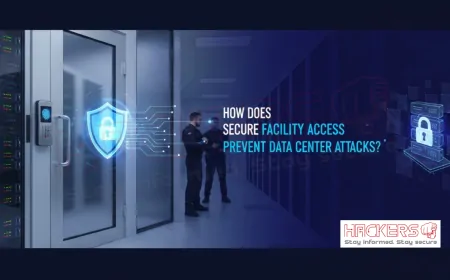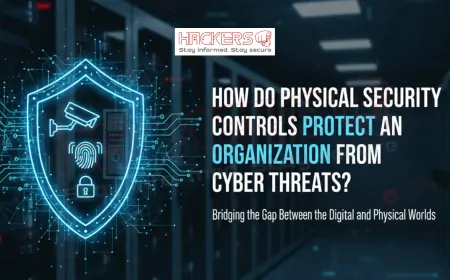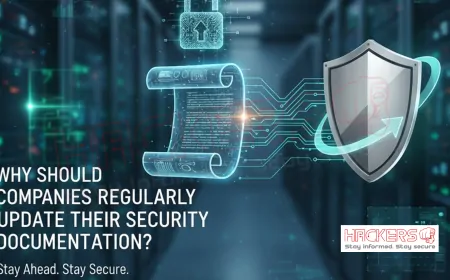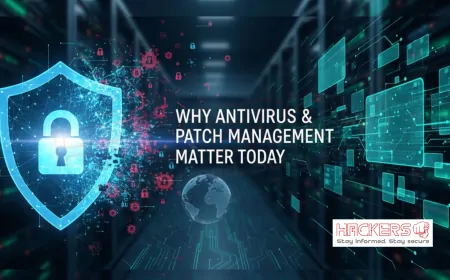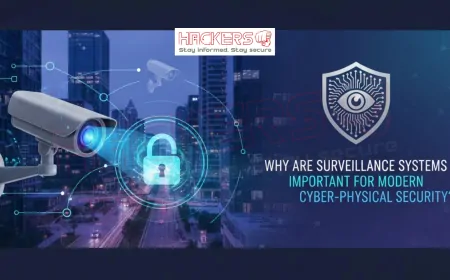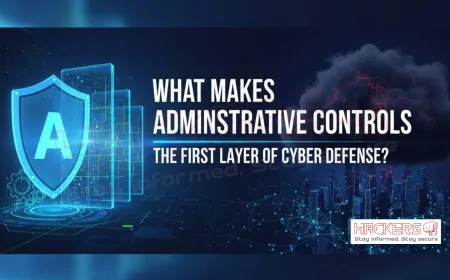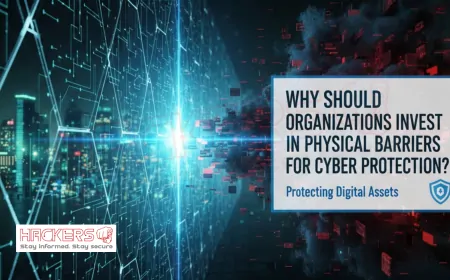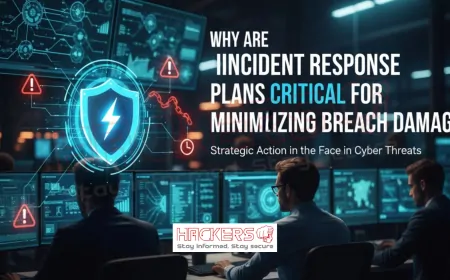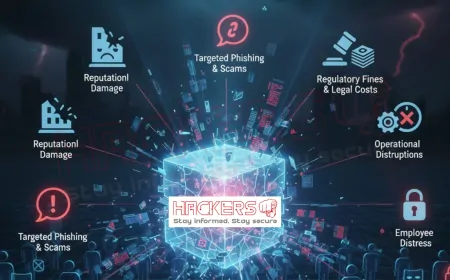How Can Companies Improve Their Technical Cybersecurity Readiness?
It was a quiet Tuesday morning in Bengaluru when the IT team at a mid-sized fintech firm received a strange email. “Your files are encrypted. Pay ₹50 lakh in Bitcoin.” Within hours, customer data, loan records, and UPI transactions were locked. The company had antivirus, a firewall, and even a backup. But no one had tested the backup in six months. Recovery failed. The attack cost ₹8 crore in ransom, fines, and lost trust. This is not a rare story. In 2025, Indian companies face over 1.3 million cyberattacks daily (CERT-In). The good news? Most breaches are preventable. Technical cybersecurity readiness is not about buying the most expensive tool. It’s about building a system that detects, stops, and recovers from threats fast. In this blog post, we’ll walk you through 12 practical, step-by-step strategies that any company, from a two-person startup in Pune to a bank in Mumbai, can use to get battle-ready. Let’s turn fear into action.

Table of Contents
- Why Technical Cybersecurity Readiness Matters
- Step 1: Assess Your Current Security Posture
- Step 2: Implement Rigorous Patch Management
- Step 3: Enforce Multi-Factor Authentication (MFA)
- Step 4: Segment Your Network
- Step 5: Encrypt Everything
- Step 6: Deploy Real-Time Monitoring and SIEM
- Step 7: Secure Endpoints with EDR
- Step 8: Build and Test Backups
- Step 9: Adopt Zero Trust Architecture
- Step 10: Train Employees with Simulations
- Step 11: Secure Your Supply Chain
- Step 12: Run Tabletop Exercises and Red Team Tests
- Cybersecurity Readiness Checklist Table
- Common Pitfalls to Avoid
- Future-Proofing Your Defenses
- Conclusion
- FAQs
Why Technical Cybersecurity Readiness Matters
Cyber readiness is your company’s immune system. It doesn’t prevent every cold, but it stops most from becoming pneumonia.
- Average breach cost in India: ₹19.5 crore (IBM, 2025).
- Downtime cost: ₹1.5 lakh per hour for mid-sized firms.
- Regulatory fines: Up to ₹250 crore under DPDP Act.
- Reputation: 71% of customers leave after a breach (KPMG).
Start today. A 10% improvement in readiness cuts breach risk by 40% (Gartner).
Step 1: Assess Your Current Security Posture
You can’t fix what you don’t measure.
- Run a vulnerability scan using tools like Nessus or OpenVAS.
- Conduct a penetration test (ethical hacking) annually.
- Map all assets: servers, laptops, IoT devices, cloud accounts.
- Use NIST CSF or CIS Controls to score yourself.
Free tools: Microsoft Secure Score, Google Security Checkup.
Step 2: Implement Rigorous Patch Management
80% of breaches exploit known vulnerabilities (Verizon DBIR 2025).
- Automate patches for OS, apps, and firmware.
- Prioritize critical patches within 48 hours.
- Test patches in a staging environment first.
- Use WSUS or Intune for Windows; Yum for Linux.
Log4j (2021) and MoveIt (2023) breaches were due to unpatched software.
Step 3: Enforce Multi-Factor Authentication (MFA)
MFA adds a second lock. Passwords alone are not enough.
- Use authenticator apps (Google, Microsoft) over SMS.
- Enable MFA on email, VPN, cloud consoles, and banking.
- Train users: “If you don’t see the MFA prompt, it’s a phishing site.”
Microsoft reports 99.9% fewer account compromises with MFA.
Step 4: Segment Your Network
Don’t let one infected laptop reach the CEO’s files.
- Create VLANs for departments (HR, Finance, IT).
- Use firewalls between segments.
- Apply least privilege: HR can’t access servers.
- Isolate IoT devices (printers, CCTV) on a guest network.
Step 5: Encrypt Everything
Encryption turns data into unreadable code without the key.
- Enable full-disk encryption (BitLocker, FileVault).
- Use TLS 1.3 for websites and emails.
- Encrypt backups and cloud storage (S3 SSE, Azure Disk Encryption).
- Mask Aadhaar, PAN in databases (show only last 4 digits).
DPDP Act mandates encryption for sensitive personal data.
Step 6: Deploy Real-Time Monitoring and SIEM
SIEM (Security Information and Event Management) collects logs and alerts on anomalies.
- Use ELK Stack, Splunk, or QRadar.
- Monitor login failures, privilege escalation, file changes.
- Set alerts for east-west traffic (lateral movement).
- Integrate with CERT-In for threat intel.
Average detection time in India: 280 days. SIEM cuts it to hours.
Step 7: Secure Endpoints with EDR
EDR (Endpoint Detection and Response) goes beyond antivirus.
- Deploy CrowdStrike, Microsoft Defender, or SentinelOne.
- Block ransomware with behavior analysis.
- Enable USB control and application whitelisting.
- Update definitions hourly.
Step 8: Build and Test Backups
Backups are your last line of defense.
- Follow the 3-2-1 rule: 3 copies, 2 media types, 1 offsite.
- Use immutable backups (can’t be deleted by ransomware).
- Test restores monthly.
- Store one copy in cold storage (offline).
If you haven’t restored a backup in 30 days, you don’t have one.
Step 9: Adopt Zero Trust Architecture
Trust no one by default. Verify every access.
- Use identity-based access (Okta, Azure AD).
- Implement micro-segmentation.
- Require device compliance (patched, encrypted).
- Monitor sessions in real time.
Google, Microsoft, and Zscaler run on zero trust.
Step 10: Train Employees with Simulations
90% of breaches start with phishing.
- Run monthly phishing drills (KnowBe4, Proofpoint).
- Reward employees who report fake emails.
- Teach password hygiene and USB safety.
- Use CERT-In Cyber Swachhta Kendra free resources.
Step 11: Secure Your Supply Chain
Your vendor’s weakness is your risk.
- Sign Data Processing Agreements under DPDP.
- Ask for SOC 2 or ISO 27001 reports.
- Scan vendor software with SBOM tools.
- Limit access to only required data.
Step 12: Run Tabletop Exercises and Red Team Tests
Practice makes perfect.
- Simulate ransomware, CEO fraud, DDoS.
- Involve IT, legal, PR, and leadership.
- Hire red teams annually (ethical hackers).
- Document lessons and update plans.
Cybersecurity Readiness Checklist Table
| Action | Tool/Example | Frequency | Done? |
|---|---|---|---|
| Vulnerability Scan | Nessus, OpenVAS | Monthly | |
| Patch Critical Systems | WSUS, Intune | Within 48 hours | |
| Enable MFA Everywhere | Google Authenticator | Immediate | |
| Test Backup Restore | Veeam, Acronis | Monthly | |
| Run Phishing Drill | KnowBe4 | Monthly | |
| Red Team Test | External firm | Annually |
Common Pitfalls to Avoid
- Buying tools without training: “We have SIEM” but no one watches alerts.
- Ignoring legacy systems: Old Windows XP in the factory.
- Trusting employees too much: No MFA for admins.
- Skipping tests: “Backups work in theory.”
Future-Proofing Your Defenses
Cyber threats evolve. So must you.
- Prepare for quantum attacks: Adopt PQC by 2030.
- Integrate AI-driven threat hunting.
- Comply with DPDP Rules 2026: AI audits, data minimization.
- Join ISACs (Information Sharing and Analysis Centers).
Conclusion
Technical cybersecurity readiness is a journey, not a destination. Start with assessment, patch fast, enforce MFA, segment, encrypt, monitor, and test everything. Use the 12 steps in this guide to build a resilient defense. In 2025, Indian companies face more threats than ever, but also more tools and knowledge. The fintech firm in Bengaluru? After the breach, they adopted zero trust, tested backups weekly, and cut risk by 85%. Your company can do the same. Cybersecurity is not a cost. It’s an investment in trust, growth, and survival. The next attack is coming. Will you be ready?
FAQs
What is technical cybersecurity readiness?
The ability to prevent, detect, and recover from cyber threats using tools and processes.
How much does readiness cost?
₹5–50 lakh per year for mid-sized firms. ROI: avoids ₹19.5 crore breaches.
Is antivirus enough?
No. You need EDR, MFA, backups, and training.
Do small companies need SIEM?
Not full SIEM. Start with Microsoft Sentinel or ELK (free tier).
Can I do this without an IT team?
Yes. Use MSSPs (Managed Security Service Providers) like Seqrite or Paladion.
What is the 3-2-1 backup rule?
3 copies, 2 different media, 1 offsite or offline.
Is zero trust expensive?
Initial setup: ₹10–30 lakh. Cloud-native tools reduce cost.
How often should I test backups?
Monthly. Restore a sample file to verify.
Does DPDP Act require encryption?
Yes, for sensitive personal data like Aadhaar, health records.
What is EDR?
Endpoint Detection and Response. Advanced antivirus with behavior monitoring.
Can employees bypass MFA?
No. Enforce it via policy and tools like Azure AD Conditional Access.
What is a red team?
Ethical hackers who simulate real attacks to find weaknesses.
Should I pay ransomware?
No. 80% who pay get attacked again. Restore from backups.
How do I start patch management?
Inventory all software. Use WSUS or Jamf. Automate.
Is network segmentation hard?
Not with VLANs and next-gen firewalls (Palo Alto, Fortinet).
What is SBOM?
Software Bill of Materials. List of all components in your software.
Can I use free tools?
Yes. OpenVAS, OSSEC, Wazuh, and pfSense are powerful and free.
How do I measure readiness?
Use NIST CSF maturity levels or CIS Controls score.
What’s next after these steps?
Achieve ISO 27001 or SOC 2 for global trust.
Where can I get help in India?
CERT-In, I4C, NASSCOM, or local MSSPs.
What's Your Reaction?









